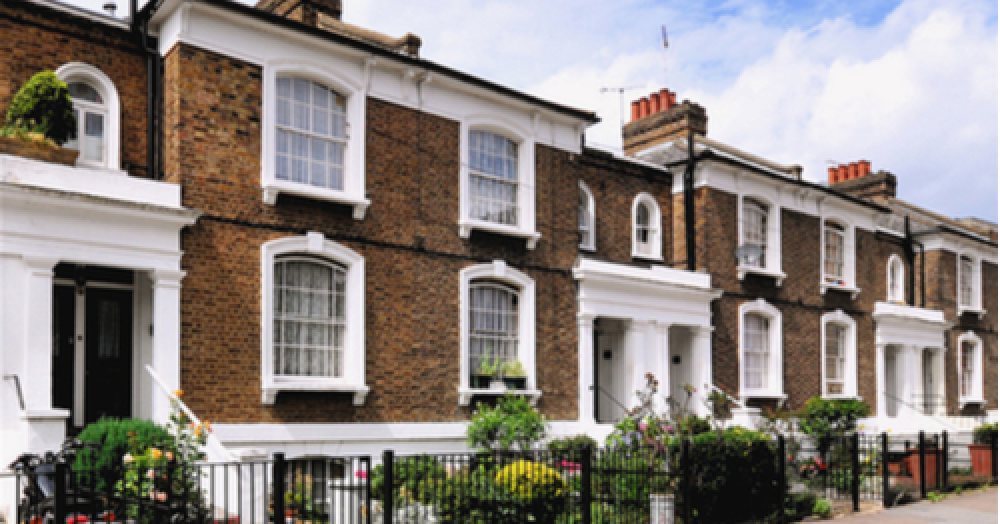If you are wondering, 'How old is my house?' or ‘What era is my house?’ we are here to help!
Here we’ll go through the most common era properties – plus we’ll explain how to work out how old your home is, learn more about its history and discover more about UK houses through the ages.
Why do you need to know what period your house is?
The more you know about your home, the more you will admire its uniqueness and enjoy its character. When renovating, knowing your home’s age will also ensure that changes appropriately respect and preserve its history.
In addition to this, if you’re purchasing a property, your mortgage lender will need to know how old it is. In part, this assists in understanding risks associated with the home’s age, as well as ensuring greater accuracy when determining value. Because period properties are highly desirable and those with period features are greatly coveted, asking prices on period properties tend to reflect desirability.
Georgian Properties
The Georgian period began in 1714 with King George I and lasted until the death of King George IV in 1830. It was an exciting period for architecture, with designs incorporating large windows designed to heighten natural light. In place of smaller, darker rooms common in previous eras, Georgian homes offer larger rooms intended to prioritise comfort while maximising space.
During the Georgian era, the staff occupied the upper storeys, while the owner and their family lived on the first and second storeys. That’s why upper rooms are typically smaller, with less impressive windows and lower ceilings.
What are the main characteristics of a Georgian property?
-
Sash windows with small panes. It’s common to see one or more bricked up windows on a Georgian house; these are the result of the window tax levied between 1696 and 1851.
-
Taller windows on the first two floors; smaller windows on upper storeys.
-
Large kitchen located on the lower ground level well away from the main living area.
-
No private garden; instead, many Georgian homes were erected around garden squares or built within a terrace.
-
Stucco fronted exterior with a flat, symmetrical appearance.Balanced, roomy interior layout.
-
You’ll notice that Georgian architecture embraces a variety of styles, but all are elegant and symmetrical, often with flamboyant neo-classic touches.
Victorian Properties
After the Industrial Revolution, wealth was distributed across a much larger sector of society, creating the beginnings of a middle class and making home ownership a reality even for those who were not wealthy landowners, landlords, or members of the gentry. This period began in 1830 and ended in 1901, coinciding with the rule of Queen Victoria I.
Because many Victorian homes were built on terraces, along narrow streets, it’s common to see footprints that are longer and thinner than those of typical Georgian homes. Many Victorian properties are a single room wide, with a narrow hallway. Some feature two rooms upstairs and two rooms downstairs.
As Queen Victoria’s reign was so long, there is quite a bit of overlap between the end of the Georgian period and the beginning of the Victorian period as well as between the end of the Victorian period and the beginning of the Arts and Crafts Movement.
What are the main characteristics of a Victorian property?
-
High ceilings
-
Large bay windows
-
Stained glass windows
-
Brickwork porches
-
Brickwork in contrasting colours
-
Geometric tiles in hallways
-
Patterned wallpaper; usually floral
-
Wood floors
-
A fireplace in each room
-
Elaborate, detailed features that reflect the personalities and wealth of the homes’ owners
-
Watch for a few other features that make it easy to identify a Victorian property: An asymmetrical design, steep, pointed roofline, and lavish decorations are key elements.
Edwardian Properties
The Edwardian period was short, lasting only from 1901 to 1910. Edwardian properties display a heavy Arts and Crafts Movement influence; carved features are common, along with more decorations on building exteriors. Porches and verandas are typical features, along with larger gardens, stylish multi-panel windows, and wide, squat footprints. Timber framing, pebbledash, and hanging tiles add even more interest to Edwardian home exteriors.
Inside, Edwardian homes are light and bright, with fireplaces, staircases, and elaborate tilework taking pride of place in spacious rooms designed for social gatherings.
What are the main characteristics of an Edwardian property?
-
Neighbourhoods feature houses built in straight lines
-
Mock-Tudor cladding and timbers, typically toward the top of the house
-
Red brickwork
-
Parquet wood floors
-
Ornate tilework
-
Wide hallways
-
Brighter interiors
-
Large windows
You can see the aesthetic of the Arts and Crafts Movement reflected in buildings that date to the Edwardian period. While simpler than their Victorian counterparts, these properties offer many decorative touches inside and out.
How to find out how old your house is
If you have a period property but you aren’t quite certain of its age, there are a few simple ways to learn more:
-
Check the 1862 Act register, which contains 2,000 historic properties (the document on the right is an example of a record in the 1862 Act Register).
-
Search records in your local library.
-
Search local archives including county and parish records.
-
Check with local authorities, who may have planning permission records on file.
-
Check Historic England’s National Heritage List for England.
-
Contact a history society in your town or county.
-
Ask your seller or their agent if you are buying a property.
-
Look at the survey attached to your mortgage; it may state the building’s age.
-
If neighbours live in similar properties, ask if they know the age of their home.
-
If your property is a listed building, you may be able to learn more by reading the list description, as it provides the best possible estimation of the date your house was built.
